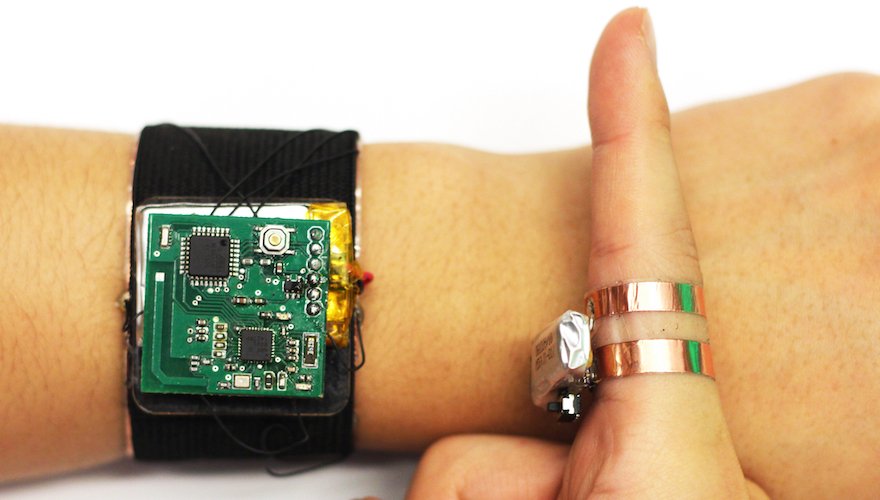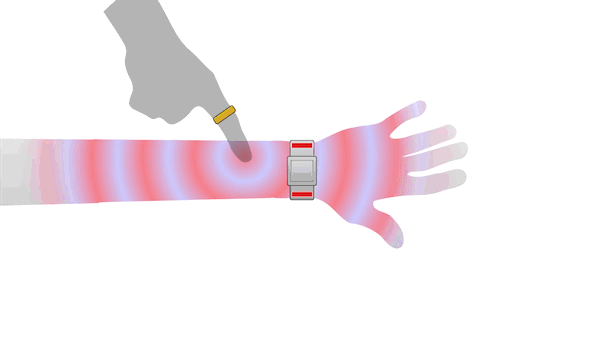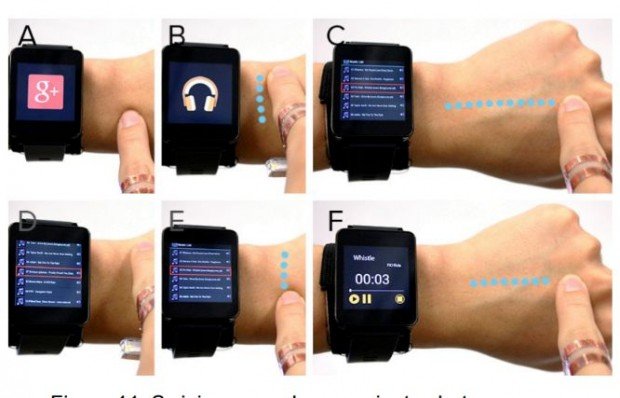
Touchscreens are everywhere nowadays - of course in our phones and tablets, but also in cars, household devices, and even public facilities like retail store checkouts or hospitals.
But what if you could turn part of your body into a touchscreen?
A new wearable created by researchers at the Carnegie Mellon University in Pennsylvania promises just that.
It turns your arm into a touchpad to control a smart watch!
Smartwatches have become increasingly popular in the last few years, but the small screen size has always been a problem. It's just not very functional trying to control a touchscreen with 1/4 size of your smartphone.
“A major problem with smartwatches and other digital jewelry is that their screens are so tiny. Not only is the interaction area small, but your finger actually blocks much of the screen when you’re using it. Input tends to be pretty basic, confined to a few buttons or some directional swipes.”“SkinTrack makes it possible to move interactions from the screen onto the arm, providing much larger interface."
-Gierad Laput and Chris Harrison from the research team

How does SkinTrack work?
The SkinTrack wearable consists of a wristband and a ring.
The ring sends electrical signals through the finger, which are then being picked up by the sensing band.
If the finger wearing the ring touches the skin, a high-frequency electrical signal is released over the arm.
The device then measures the distance between the four electrodes embedded in the wristband and the electrical signal, to calculate exactly where your finger is touching the skin on your arm.

The SkinTrack touchscreen has proven 99% accuracy and the location of touch was measured with maximum errors of 7.6 millimeters!
Features
SkinTrack can be viewed as an extension of the touchpad for a smartwatch.
It recognizes gestures like swiping, dragging or poking.
Therefore, it can be used to navigate through apps, playing games, dialing numbers, accepting calls and more.


Challenges
Although the wearable was developed about 1 year ago, there are still some challenges to overcome .
Humidity, sweat or oils on the skin can make the signal harder to locate.
Also, the charge of the ring doesn't last very long, limiting the use of the device.
The SkinTrack was a scientific experiment and there are no concrete plans to turn it into a commercial product.
But the technology is very promising and shows the potential for future touchscreen-wearables for the human body!
Images: 1, 2, 3, 4, 5, Sources: 1, 2, 3, 4, 5, 6
- Instagram -

© Sirwinchester

